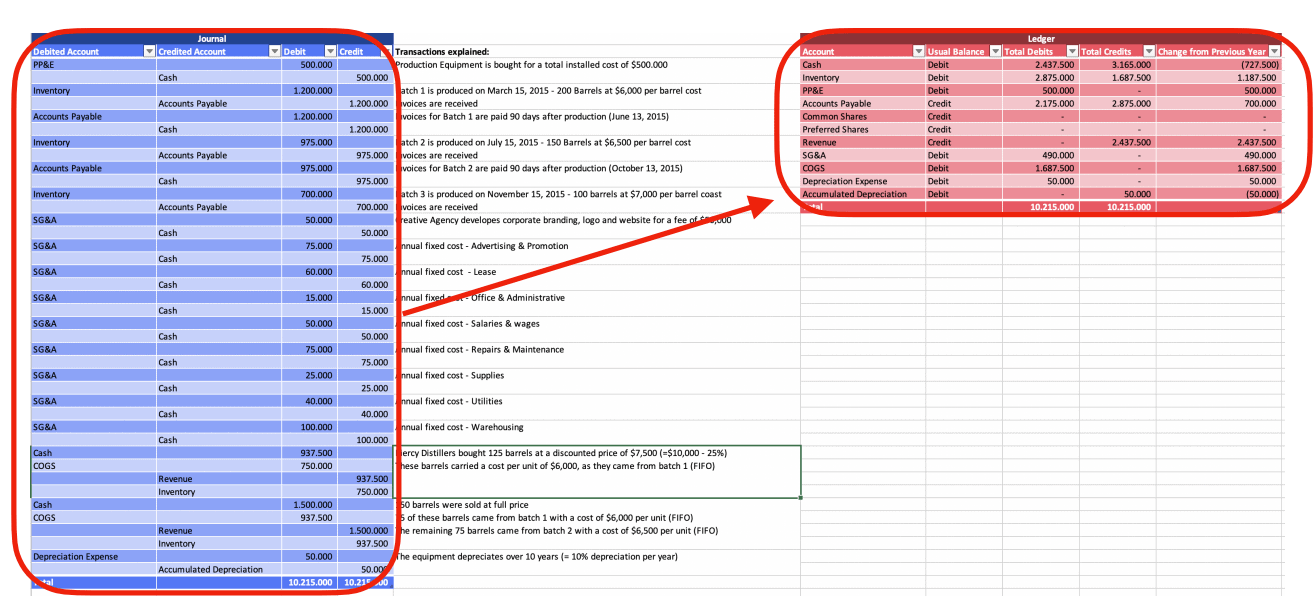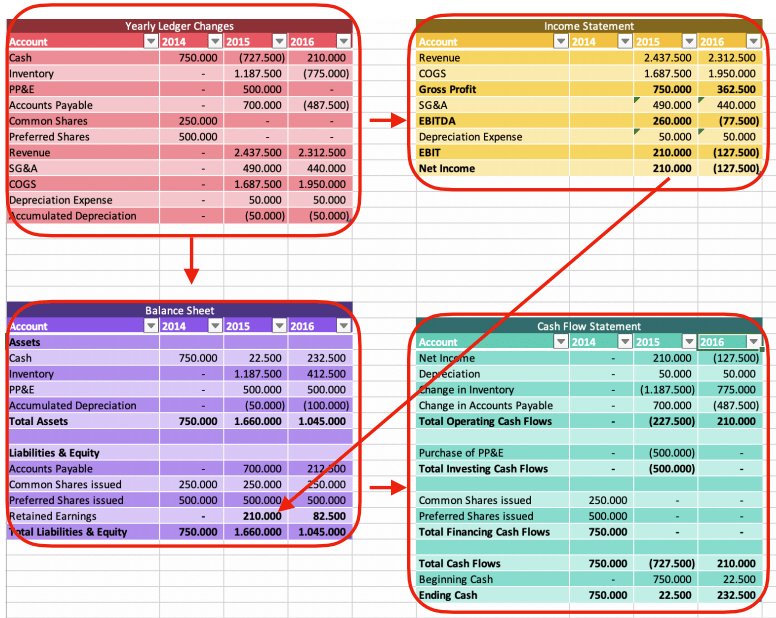This "McPhee Distillers: Accounting Policy Choices in the Preparation of Financial Statements" case study evaluates the business of McPhee Distillers on business model profitability, potential improvements to operations and, last but not the least, if the business should be continued or not.
Mitchell Stein, Vaughan Radcliffe, Adam Erickson
Harvard Business Review (W16821-PDF-ENG)
December 09, 2016
Case questions answered:
Case study questions answered in the first solution:
- Prepare the multi-year balance sheets, income statements, and cash flow statements for McPhee Distillers.
- Analyze the financial statements to evaluate the financial health of the business.
Case study question answered in the second solution:
- After two years of operations, Kingsley was awaiting her financial results. Was her business model profitable, or had she made an error by focusing on barrel sales? Could she improve her operations, or would she have to walk away from her dream, like many other entrepreneurs before her?
Not the questions you were looking for? Submit your own questions & get answers.
McPhee Distillers: Accounting Policy Choices in the Preparation of Financial Statements Case Answers
This case solution includes an Excel file with calculations.
You will receive access to two case study solutions! The second is not yet visible in the preview.
1. Prepare the multi-year balance sheets, income statements, and cash flow statements for McPhee Distillers.
Find attached Excel sheets (McPhee Distillers.xlsx).
All the transactions have been recorded and explained in a yearly journal.

From the yearly journals, the transactions were pulled into a ledger. It summarizes all debits and credits of the individual accounts and calculates the changes within the year. All sales were treated as revenue and paid in cash.
All costs from Exhibit 3 (e.g., Lease, Salaries, Wages, etc.) were treated as Sales, General, and Administrative expenses (SG&A).
The Cost of Goods Sold (COGS) was calculated using the first-in, first-out method. So, barrels from batch 1 were sold before barrels from batch 2 could be sold.
Examples:
In 2015, Elsa spent $25,000 on supplies. This transaction was paid in cash. The journal has an entry that debits SG&A with $25,000 and credits cash with an equal amount.
On November 15, Elsa produced batch 3 with 100 barrels at a cost per unit of $7,000. Inventory is debited with $700,000, and Accounts Payable is credited with the same amount. However, in this case, the credit on Accounts Payable is carried over as she does not pay it off until 90 days later (so in 2016).
The changes from the yearly tabs were copied and linked to the Statements tab into the Yearly Ledger changes. From there, the figures were fed into the balance sheet to show the annual Accounts by Asset categories and into the income statement, which gives the net income for McPhee Distillers to calculate retained.

These figures then go into the Cash Flow statement to show the actual cash flow of Elsa’s business.
2. Analyze the financial statements to evaluate the financial health of the business.
1. Analysis of financial key performance
McPhee Distillers started its business in 2014 by issuing shares and receiving a total cash injection of $750,000. In 2015, McPhee bought PP&E for $500k and increased its assets significantly by producing inventory at almost $1.2m. This increase was balanced with an increase in liabilities of $700k and significant retained earnings of $210k.
In 2016, a large part of the inventory could be sold off, and the liabilities could be decreased.
Looking at the income statement alone, one could say that 2015 was a highly successful year for the company, while in 2016, it made losses of $127,500. However, the Cash Flow statement shows that much of the cash during 2015 was tied up in inventory. The total cash flow in 2016 was much better than in 2015.
To analyze the ROE of the company, we can simply calculate for both years:
ROE 2015: net income / equity = 210,000 / 750,000 = 0.28
ROE 2016: net income / equity = -127,500 / 750,000 = -0.17
But the DuPont Analysis gives a much more detailed picture:
DuPont 2015: 0,09 x 1,47 x 2,21
DuPont 2016: -0,05 x 2,21 x 1,39
In 2015, McPhee Distillers’ equity was tied up in assets (inventory), while in 2016, the asset turnover ratio increased. However, we can see that net income is an issue for the company. This is mostly due to high costs and a lack of pricing.
2. Costs
Looking at the cost structure of McPhee Distillers, it becomes obvious that Elsa faces a significant issue there. Her business carries both fixed costs and variable costs. To analyze the costs further, it is necessary to take a deep dive and identify the individual costs and if there is an opportunity for cost-cutting.
2.1. Variable Costs
Every batch carries a variable cost that is calculated per barrel.
The difference in variable costs is due to the fluctuation of prices for barrels. The limited supply of oak and the surge of demand for barrels create a major shortage and price increase.
This scenario increases variable costs between Elsa’s first batch and her 6th batch by more than 40%!
The variable costs per batch:


2.2. Fixed Costs
McPhee Distillers has fixed costs that are slightly higher in the first year due to the incorporation, which carries a Marketing expense of $ 50,000 for the creation of the corporate branding and logo.
Next to this extraordinary expense, the Distillery has eight different expense categories that we need to analyze separately.
2.2.1. Advertising & Promotion
In 2015, the company sold 150 barrels on the general market, and one year later, only 100. Elsa clearly states that the regular sales in the first year were…
Unlock Case Solution Now!
Get instant access to this case solution with a simple, one-time payment ($24.90).
After purchase:
- You'll be redirected to the full case solution.
- You will receive an access link to the solution via email.
Best decision to get my homework done faster!
Michael
MBA student, Boston
 Best decision to get my homework done faster!
Best decision to get my homework done faster!